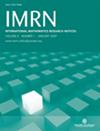通过胶合实现分层变体的绉解
IF 0.9
2区 数学
Q2 MATHEMATICS
引用次数: 0
摘要
让 $X$ 是一个具有分层 ${\mathcal{S}}$ 的平滑局部封闭子域的综,使得 $X$ 是沿每个分层的局部积(例如交映奇点)。我们证明,给每个开放子集 $U \subset X$ 分配 $U$ 的局部投影绉褶解析的同构类集合,就定义了一个 ${mathcal{S}}$ 可构造的集合流。因此,对于每个层$S$和S$中的基点$s,基群作用于$s$处的投影褶皱解析的胚芽集合,使得延伸到整个层的胚芽不变。全局局部投影褶皱解析对应于所有层的相容的此类选择。例如,如果局部投影褶皱解析是唯一的,那么它们就会自动唯一地粘合在一起。我们给出了局部投影褶皱解析 $\rho : \tilde X \to X$ 成为全局投影的标准。我们证明,相对皮卡类的预流形 $U (mapsto operatorname{Pic}(\rho ^{-1}(U)/U)$) 的 sheafification 也是可构造的。只有当存在局部相对充裕的束,其类与这个剪切的全局截面胶合时,这个解析才是全局投影的。将该部分提升为全局充裕线束的障碍由奇点 $X$ 上的格点编码。我们证明,如果 $X$ 是交映商奇点,则格点自动是微不足道的。我们的主要结果在部分绉绸决议的更一般情况下也成立,因为部分绉绸决议不需要光滑源。我们将这一理论应用于具有杜瓦尔奇点的对称幂和希尔伯特曲面、环的有限商、乘法和中岛翮变以及典范三折奇点。本文章由计算机程序翻译,如有差异,请以英文原文为准。
Crepant Resolutions of Stratified Varieties via Gluing
Let $X$ be a variety with a stratification ${\mathcal{S}}$ into smooth locally closed subvarieties such that $X$ is locally a product along each stratum (e.g., a symplectic singularity). We prove that assigning to each open subset $U \subset X$ the set of isomorphism classes of locally projective crepant resolutions of $U$ defines an ${\mathcal{S}}$-constructible sheaf of sets. Thus, for each stratum $S$ and basepoint $s \in S$, the fundamental group acts on the set of germs of projective crepant resolutions at $s$, leaving invariant the germs extending to the entire stratum. Global locally projective crepant resolutions correspond to compatible such choices for all strata. For example, if the local projective crepant resolutions are unique, they automatically glue uniquely. We give criteria for a locally projective crepant resolution $\rho : \tilde X \to X$ to be globally projective. We show that the sheafification of the presheaf $U \mapsto \operatorname{Pic}(\rho ^{-1}(U)/U)$ of relative Picard classes is also constructible. The resolution is globally projective only if there exist local relatively ample bundles whose classes glue to a global section of this sheaf. The obstruction to lifting this section to a global ample line bundle is encoded by a gerbe on the singularity $X$. We show the gerbes are automatically trivial if $X$ is a symplectic quotient singularity. Our main results hold in the more general setting of partial crepant resolutions, that need not have smooth source. We apply the theory to symmetric powers and Hilbert schemes of surfaces with du Val singularities, finite quotients of tori, multiplicative, and Nakajima quiver varieties, as well as to canonical three-fold singularities.
求助全文
通过发布文献求助,成功后即可免费获取论文全文。
去求助
来源期刊
CiteScore
2.00
自引率
10.00%
发文量
316
审稿时长
1 months
期刊介绍:
International Mathematics Research Notices provides very fast publication of research articles of high current interest in all areas of mathematics. All articles are fully refereed and are judged by their contribution to advancing the state of the science of mathematics.

 求助内容:
求助内容: 应助结果提醒方式:
应助结果提醒方式:


